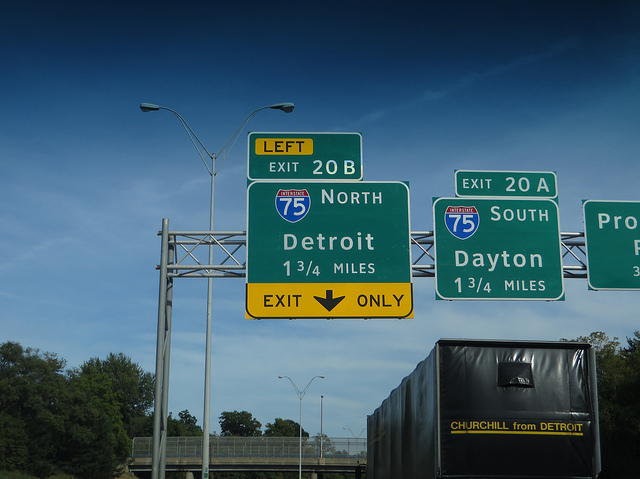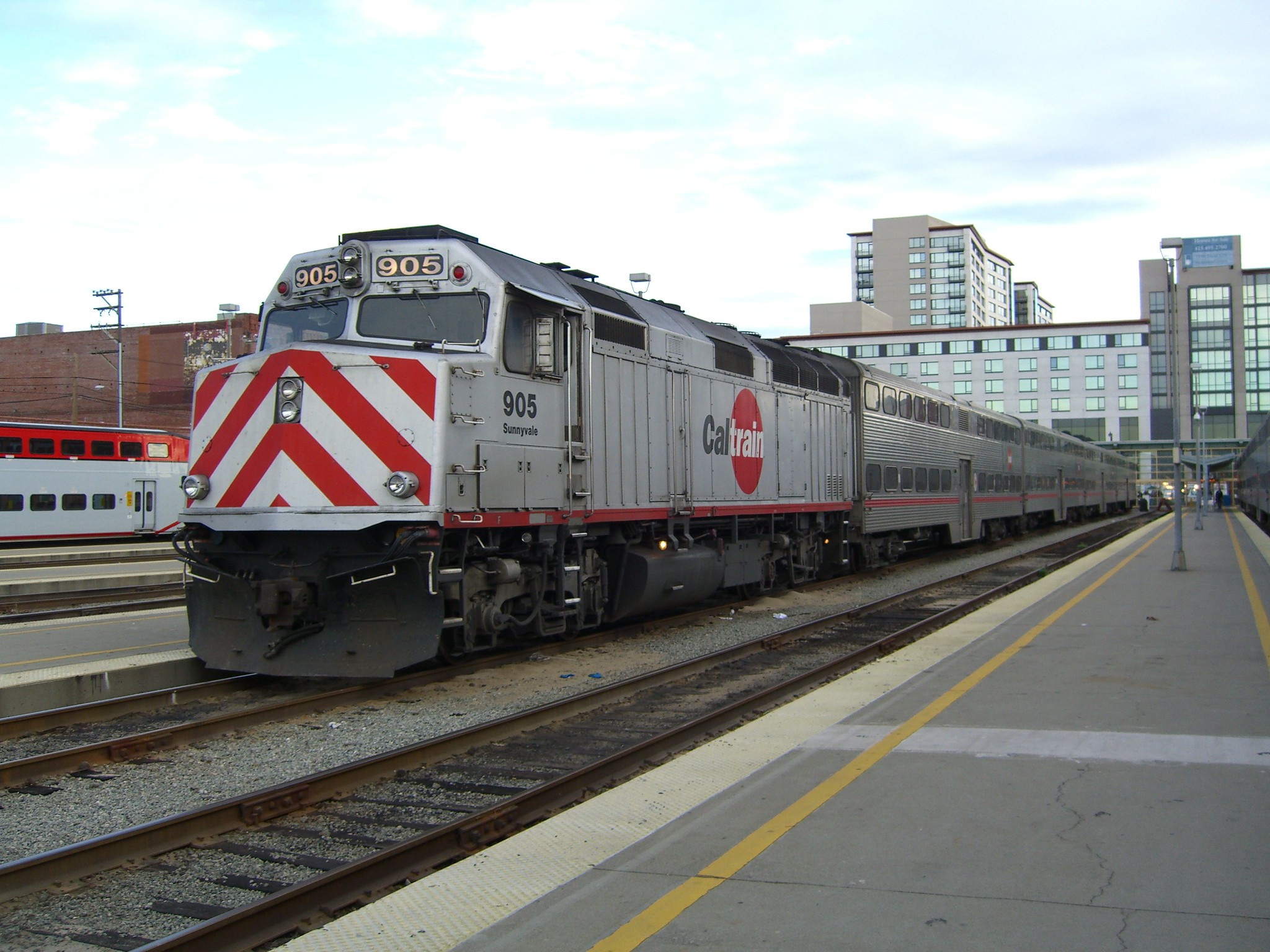In this year's installment of its annual “Highway Boondoggles” report, Gideon Weissman of Frontier Group and Matthew Casale of U.S. PIRG Education Fund deliver a stark warning about the billions of dollars states spend on unnecessary highways that fracture our cities, deprive transit of scarce funds, and pollute our environment. Below is the third of nine installments detailing case studies of these harmful roadways: Michigan's Interstate 75 widening project, which would exacerbate sprawl and hurt the communities through which it runs.
The Detroit area, whose population has shrunk during the past 20 years, suffers from costly sprawl, roads and bridges that are in poor condition, and a woefully inadequate transit system. Such a situation seems to call for reinvestment in the present system, not road expansion.
Nevertheless, Michigan is undertaking to expand the capacity of Interstate 75 through suburban Oakland County, north of Detroit — a project that is both unnecessary and will exacerbate the region’s problems. Although some sections of the project have begun, as of April 2019, the $1.4-billion last segment of the project, which stretches from M-102 to north of 13 Mile Road, was not slated to begin construction until the fall of 2019.
In describing the need for the project, the Michigan Department of Transportation has pointed to population growth in Oakland County as the reason the area needs a larger highway. But even in Oakland County, one of the few areas of the region that has not seen recent population decline, projected growth is slow and spread out: Projections show the whole county adding fewer than 100,000 people between 2015 and 2045, across an area nearly four times as large as Chicago. The growth-rate projection of 7.7 percent from 2000 to 2030 is also far also lower than the 12.7 percent growth rate the department cited in it is justification for the project, published in 2005. According to a Streetsblog analysis, shifting demographics and travel preferences in Oakland County “will likely shift perceptions” resulting in more, not less, support for transit in the coming years.
Michigan argues that the highway is necessary in part because “Oakland County residential development is too dispersed to support a high level of transit service.” However, such logic risks creating a vicious cycle of road development and sprawl: If the only way to meet the transportation needs of sprawl is by building more roads, that will in turn encourage more sprawl, which will once again require more roads. In contrast, more transit and support for transit-oriented development could lead to less dispersed neighborhoods that could support greater transit use over time.
According to some supporters of the expansion, the resulting sprawl would not be such a bad thing. As Brooks Patterson, the executive of Oakland County, wrote in an online essay, “let me state it unequivocally: I love sprawl. I need it. I promote it.” But sprawl imposes high costs on society. Sprawl leads to loss of open space, more air pollution and water overconsumption. And low-density development requires far more spending on infrastructure including roads, sewers and power lines – all of which must be maintained. According to one study, sprawl costs the U.S. economy $1 trillion each year.
For Southeast Michigan, the cost of highway expansion — and the sprawl it will promote — will also make it harder to pay for important transportation priorities that already face an uncertain future. Through 2045, the Southeast Michigan Council of Governments estimates the region needs to spend $20.9 billion on transit, but will have only $9.2 billion available. The council also notes that estimated spending through 2045 will “not be sufficient to restore Southeast Michigan pavement to a state of good repair.”
The I-75 expansion will also likely fail to provide meaningful congestion relief. In arguing that a transit line will not sufficiently reduce traffic, the transportation department explains the reason why: induced travel. As it writes, “demand in the I-75 corridor exceeds capacity, so any diversion to transit would be quickly replaced by others wishing to use I-75.”
Just as with transit, new road capacity will also be filled by new driving. The phenomenon is known as the “Fundamental Law of Road Congestion” — traffic grows to fill the available space. Yet while MDOT uses the phenomenon of induced travel to argue against transit, it does not consider induced travel in its road expansion analysis, merely noting that “the tools to analyze induced travel are not fully developed at this time” and that “there is no requirement to account for this at this time.”
Despite the project’s supposed economic benefits for communities along the route north of Detroit, some of those communities oppose the project. In 2013, the city of Royal Oak, through which the southern section of the Modernize 75 project runs, adopted a resolution opposing the highway-expansion project.
The resolution declared that the highway expansions of I-75 (and a separate project on nearby I-94) “threaten significant negative impacts to the communities they traverse, including displacement of residents, destruction of local tax base, loss of property value, increases in traffic noise, aggravated air pollution, and continued disinvestment…” The resolution also declared that the money for the project “would be far better spent addressing our region’s desperate need for a comprehensive regional transit system to meet the needs of residents.”





